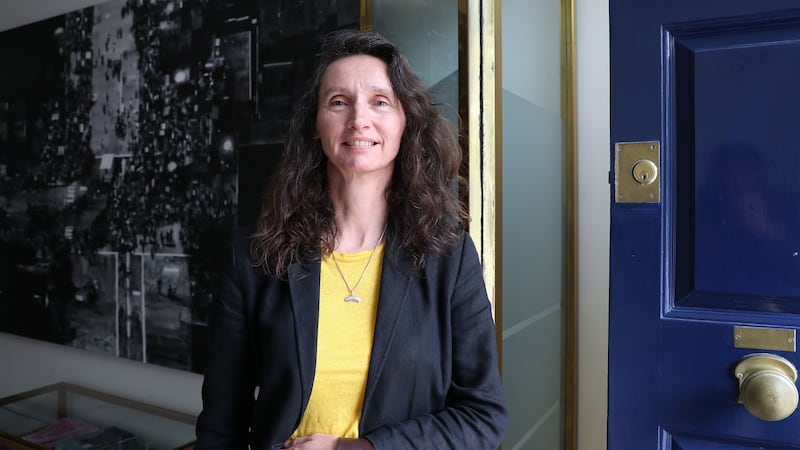A quarter of all jobs in the arts could be lost by the end of 2021, and unemployment in the sector is set to be far higher than in the rest of the economy next year, according to a new economic forecast.
The arts and entertainment sector will be hit harder than the rest of the Irish economy in 2020 and 2021, and its recovery may take until 2025 if there is no mitigation of pandemic effects.
Employment and Economic Impact Assessment of Covid-19 on the Arts Sector in Ireland, a new report by consultants EY that is set for publication this weekend, forecasts the recession in the arts sector will be about -55 per cent in 2020, compared with -11 per cent in the Irish economy generally.
Hospital Report
In the second quarter of 2020, economic activity in the arts fell 67 per cent, according to CSO data.
Describing the arts sector as “one of the first to be hit and likely to be one of the last to recover from Covid-19”, the report warns the impact of restrictions could be irreversible. It calls for “an objective, tailored and co-ordinated recovery plan for creative industries”.
If the recession in the arts pushes organisations into bankruptcy they cannot lead a recovery, the report adds.
The forecast models different scenarios for preparing the future, based on restrictions caused by Covid-19, the economic crisis and changes in consumer spending. With planning, the arts could be a “civic force field” at the heart of Ireland’s recovery strategy, says the report, which has been sent to Minister for Culture Catherine Martin.
Without mitigation, the situation could get worse in 2021, with an arts recession of between -18 and -43 per cent, depending on restrictions, compared with EY forecasts for the general economy of 6.6 per cent, with arts employment down 5-13 per cent, compared with a 4.5 per cent increase in the general economy.
Slow recovery
The report forecasts recovery of the arts sector may take until 2025 if nothing is done, with far-reaching and damaging consequences in terms of jobs, tourism and regional development.
EY assistant director at Yannick Cabrol observed the arts and entertainment sectors would “be hit harder and for longer than any other part of the economy by this pandemic. During the second quarter of this year it was the most impacted sector in Ireland with a 67.7 per cent decline in GDP, 10 times more than the rest of the economy”.
Arts Council director Maureen Kennelly said the agency wanted the best outcomes for the arts in 2021 and beyond. The sector was “facing extraordinary challenges with remarkable strength, solidarity and resilience”, and the council would “continue to work with the [Department of Culture], and [the Minister’s] Cultural Recovery Task Force, to make sure the arts play a full part in our national recovery”.

Arts Council chairman Kevin Rafter said the council has received significant additional funding this year to help alleviate the impact of the crisis on artists and arts organisations, and its pre-budget submission requests €135 million for 2021. “This report demonstrates just how urgently this support is required.”
Mr Cabrol said: “Recovery could take years with organisations closed down, artists discouraged, festivals cancelled and people worried about attending indoor events.
“The arts is not only vital for our economy, but its development is at the heart of Project Ireland 2040 aspirations to build a more sustainable and resilient economic model. With a higher focus on indigenous SMEs rather than big multinational companies, it is a job-intensive sector contributing to a balanced regional development and our quality of life.”
Updated model
The EY forecast updates its report from early in the pandemic using new information since the early summer, the Living with Covid roadmap and the likely timeline of the Covid-19 crisis into late 2021.
It says planning for an ambitious approach to recovery needs to be tailored to the disparate needs and difficulties of artists and arts organisations, co-ordinating with the wider creative industries.
The report also says:
– Arts sector workers have been severely hit by the pandemic, with 58 per cent of employees getting the temporary wage subsidy scheme or the pandemic unemployment payment.
– This year the core arts sector is projected to see a jobs loss of 15.5 per cent, putting about 1,600 arts jobs at risk, compared with a 9.7 per cent decline for the rest of the economy.
– From 2019 to 2021, some 2,000-2,700 arts jobs could be lost because of Covid-19, representing about a quarter of Irish arts workers.
The report calls for an ambitious plan to support creative industries, integrated with the wider government approach of Economic Considerations for Reinstating Economic Activity.















